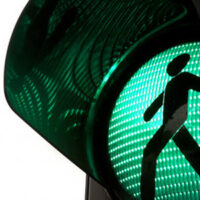Crosswalk Lights and Liability Issues

Many people believe that crosswalk lines are force-field generators that protect them when they cross the street. That’s not true. A significant number of pedestrian accident victims were in the crosswalk when a tortfeasor (negligent driver) hit them. Many people also believe that if they didn’t have the light when they were in a crosswalk, they aren’t entitled to compensation. As outlined below, that’s not true either.
Whether the light was green, yellow, or red, pedestrians usually sustain the same injuries. Since these victims have no protection from oncoming cars, these injuries are often fatal or catastrophic (life-threatening). Whether the light was green, yellow, or red, a Carlsbad personal injury lawyer can obtain substantial compensation for these victims in court. This compensation usually includes money for economic losses, such as medical bills, and noneconomic losses, such as pain and suffering.
Right of Way
At intersections, most drivers follow the basic red means stop and green means go safety rule. However, most drivers don’t apply this rule to pedestrian safety. So, a San Marcos personal injury lawyer must get involved.
Most California streets have wide lanes and short red lights. Engineers included these features so vehicles could move from Point A to Point B as quickly as possible. As a result, a victim with any mobility impairments whatsoever usually cannot make it all the way across a street on green, even if the victim steps off the sidewalk immediately after the light changes.
Many motorists don’t see pedestrians on the edge of a permanent crosswalk. Instead, they see the green light and assume it’s safe to go through the intersection at full speed. As a result, they strike the unseen pedestrian at almost full speed.
Under California law, pedestrians who started across the street on “walk” and were more than halfway across the street when the flashing “don’t walk” appeared usually retain the right of way. Pedestrians in virtual crosswalks also have the right of way, usually until they’re safely on the other side.
Virtual crosswalks are very common near schools and in downtown areas. The pedestrian presses a button that activates flashing yellow lights. Drivers must stop when they see these flashing yellow lights. But many drivers either don’t see the lights or don’t obey the stop command. So, once again, they hit pedestrians at almost full speed.
Non-Right of Way
If a pedestrian is in a permanent crosswalk on red or in a virtual crosswalk when the lights aren’t flashing, California’s comparative fault law usually applies.
Regardless of the light’s color, mist drivers have a duty of reasonable care. This legal responsibility requires them to look for pedestrians and avoid hitting them if possible.
If the pedestrian didn’t have the light, both parties were probably at fault. The pedestrian was jaywalking and the tortfeasor failed to keep a proper lookout. So, jurors must divide responsibility between the parties on a percentage basis, such as 50-50 or 80-20.
California is one of only nine pure comparative fault states. Even if the tortfeasor was only 1 percent responsible for the wreck, in the eyes of the jury, the victim is entitled to a proportionate share of compensation.
Reach Out to a Compassionate San Diego County Lawyer
Injury victims are entitled to substantial compensation. For a free consultation with an experienced personal injury lawyer in Oceanside, contact the Pursley Law Firm. Virtual, home, after hours, and hospital visits are available.
Source:
nhtsa.gov/road-safety/pedestrian-safety

